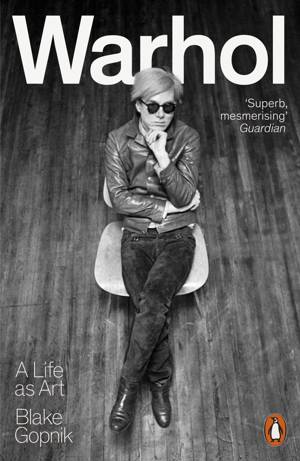
- Afhalen na 1 uur in een winkel met voorraad
- Gratis thuislevering in België vanaf € 30
- Ruim aanbod met 7 miljoen producten
- Afhalen na 1 uur in een winkel met voorraad
- Gratis thuislevering in België vanaf € 30
- Ruim aanbod met 7 miljoen producten
Zoeken
Omschrijving
"Superb...Gopnik persuasively assembles his case over the course of this mesmerising book, which is as much art history and philosophy as it is biography" Kathryn Hughes, The Guardian
When critics attacked Andy Warhol's Marilyn paintings as shallow, the Pop artist was happy to present himself as shallower still: He claimed that he silkscreened to avoid the hard work of painting, although he was actually a meticulous workaholic; in interviews he presented himself as a silly naïf when in private he was the canniest of sophisticates. Blake Gopnik's definitive biography digs deep into the contradictions and radical genius that led Andy Warhol to revolutionise our cultural world.
Based on years of archival research and on interviews with hundreds of Warhol's surviving friends, lovers and enemies, Warhol traces the artist's path from his origins as the impoverished son of Eastern European immigrants in 1930s Pittsburgh, through his early success as a commercial illustrator and his groundbreaking pivot into fine art, to the society portraiture and popular celebrity of the '70s and '80s, as he reflected and responded to the changing dynamics of commerce and culture.
Warhol sought out all the most glamorous figures of his times - Susan Sontag, Mick Jagger, the Barons de Rothschild - despite being burdened with an almost crippling shyness. Behind the public glitter of the artist's Factory, with its superstars, drag queens and socialites, there was a man who lived with his mother for much of his life and guarded the privacy of his home. He overcame the vicious homophobia of his youth to become a symbol of gay achievement, while always seeking the pleasures of traditional romance and coupledom. (Warhol explodes the myth of his asexuality.)
When critics attacked Andy Warhol's Marilyn paintings as shallow, the Pop artist was happy to present himself as shallower still: He claimed that he silkscreened to avoid the hard work of painting, although he was actually a meticulous workaholic; in interviews he presented himself as a silly naïf when in private he was the canniest of sophisticates. Blake Gopnik's definitive biography digs deep into the contradictions and radical genius that led Andy Warhol to revolutionise our cultural world.
Based on years of archival research and on interviews with hundreds of Warhol's surviving friends, lovers and enemies, Warhol traces the artist's path from his origins as the impoverished son of Eastern European immigrants in 1930s Pittsburgh, through his early success as a commercial illustrator and his groundbreaking pivot into fine art, to the society portraiture and popular celebrity of the '70s and '80s, as he reflected and responded to the changing dynamics of commerce and culture.
Warhol sought out all the most glamorous figures of his times - Susan Sontag, Mick Jagger, the Barons de Rothschild - despite being burdened with an almost crippling shyness. Behind the public glitter of the artist's Factory, with its superstars, drag queens and socialites, there was a man who lived with his mother for much of his life and guarded the privacy of his home. He overcame the vicious homophobia of his youth to become a symbol of gay achievement, while always seeking the pleasures of traditional romance and coupledom. (Warhol explodes the myth of his asexuality.)
Specificaties
Betrokkenen
- Auteur(s):
- Uitgeverij:
Inhoud
- Aantal bladzijden:
- 976
- Taal:
- Engels
Eigenschappen
- Productcode (EAN):
- 9780141977744
- Verschijningsdatum:
- 30/04/2021
- Uitvoering:
- Paperback
- Afmetingen:
- 129 mm x 198 mm
- Gewicht:
- 674 g

Alleen bij Standaard Boekhandel
+ 47 punten op je klantenkaart van Standaard Boekhandel
Beoordelingen
We publiceren alleen reviews die voldoen aan de voorwaarden voor reviews. Bekijk onze voorwaarden voor reviews.











